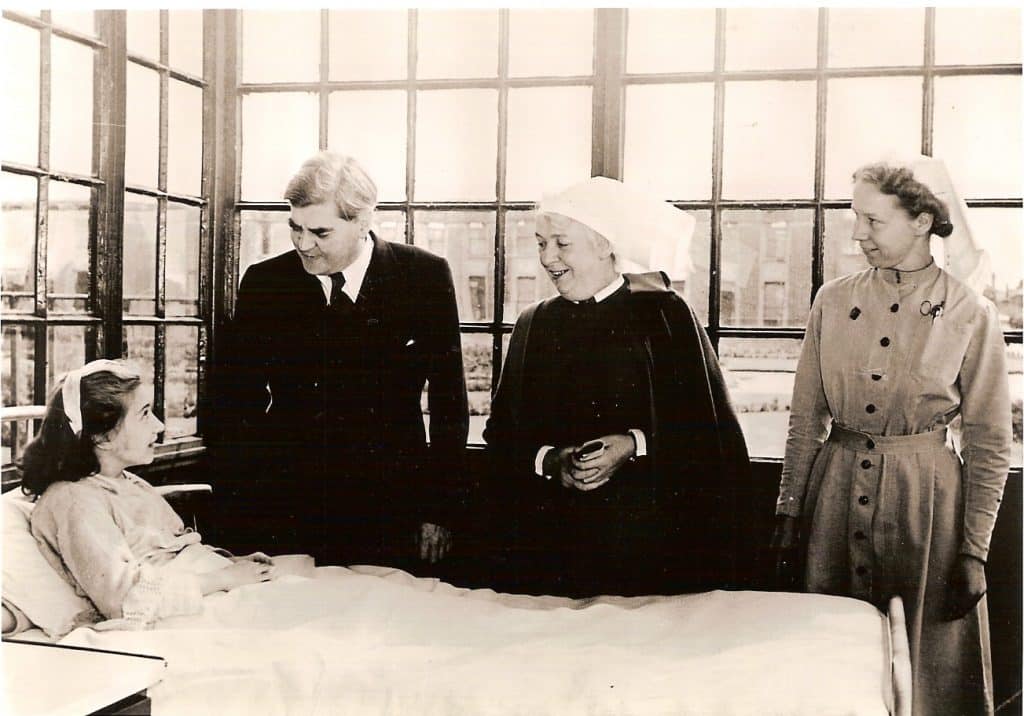The National Health Service opened its doors to much excitement on the 5th of July 1948.
Prior to the birth of the NHS, medical costs were often beyond the average working class family, with many only visiting the doctor once nothing more could be done at home. Health care was delivered through a mix of private, municipal and charitable organisations. Lloyd George’s National Insurance Act of 1911 insured GP cover for workers, but not their wives and children. Children were generally born at home, either with a trained midwife for a fee, or supported by experienced women in the local community. A doctor only became involved if complications occurred. Inpatient care varied widely, with many hospitals struggling by the end of the second world war.
To tackle this, the NHS was built on the founding belief that good quality healthcare should be available to all. Launched by the then Health Minister Aneurin Bevan, it held three principles at the heart of all decision making –
a) To meet the needs of everyone requiring healthcare
b) Healthcare will be free at the point of delivery
c) Care will be based on clinical need, rather than an ability to pay.
The newly established system saw around 2751 hospitals nationalised, working alongside numerous GP’s, pharmacists, public health laboratories, opticians and dentists across the nation. Aware of the mammoth task facing them, Prime Minister Clement Attlee asked for public patience as they tackled any unforeseen challenges.
British medicine was already in the midst of change, largely due to both the First and Second World War. Many young male doctors had signed up to fight, those who returned brought with them knowledge gained during conflict. The Second World War led to numerous scientific discoveries, both at home and abroad. From improved renal care to the use of cobalt for radiotherapy and radioactive isotopes in nuclear medicine, these scientific developments were a giant leap forward for diagnosis and treatment. In turn, the new established NHS became a substantial client for industry in science and technology.
Roles for women in healthcare were evolving too. A small number of female doctors had qualified in recent decades, as medical schools opened admissions to female students after the first war. Changes in training also saw the nursing role placed in higher regard, although it would be another 15 years before women were allowed to be married and continue their nursing career.
Taking lessons from the government campaigns during World War Two, the NHS placed great emphasis on personal responsibility, promoting ways to stay well and prevent illness. Topics included potential dangers in the home, diet and nutrition, preventing spread of infectious diseases, accident prevention and, as we enter the early 1950s, education around breast and cervical cancers. This eventually developed into the arena of preventative medicine, a strong focus for the modern approach to health care.
While the world may have changed substantially since the idea of a national health service was first conceived, many of the challenges of running an NHS have not. Staff shortages and training, the diagnosis and treatment of a wide variety and growing set of health conditions, and balancing a budget in the face of a growing population – all remain part of the conversation in the 21st century. What has not changed, so far, is the underlying philosophy that everyone, regardless of wealth or status, is entitled to good quality health care, free at the point of need.
